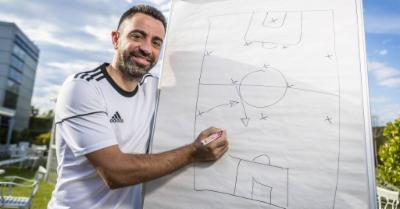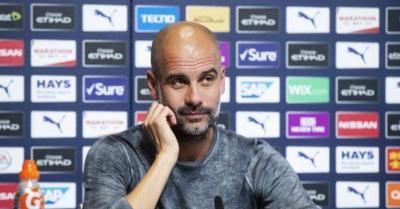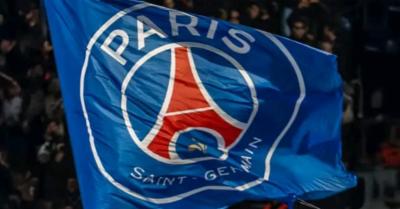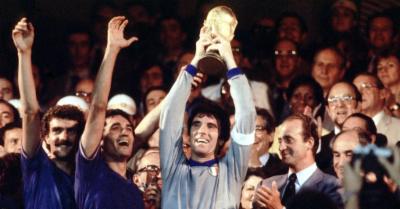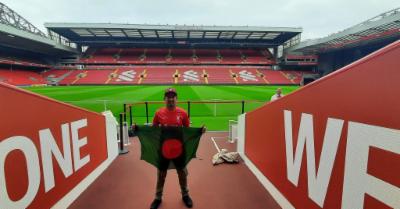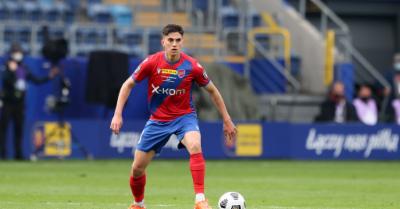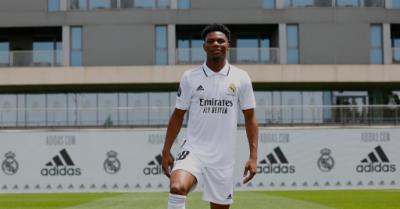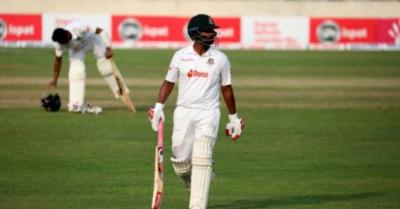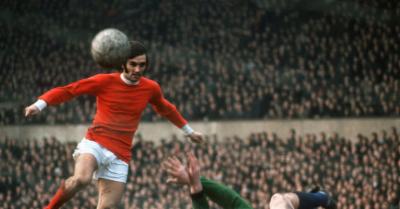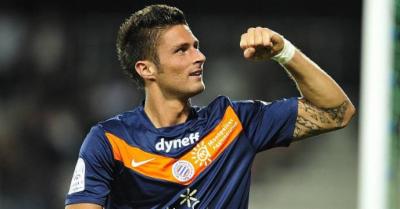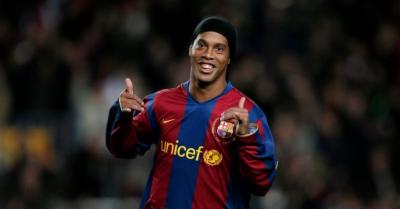Tactical Analysis of England VS Croatia
পোস্টটি ১১০০ বার পঠিত হয়েছে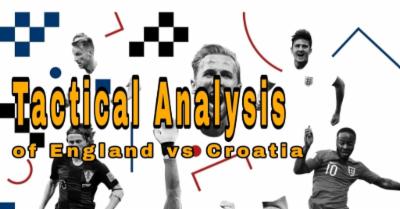
Tactical Analysis of England VS Croatia
The first match in Group D is a rematch of the World Cup semi-final. Both teams are not really convincing. The English start energetically and are able to create a few chances thanks to a few clean group tactics. Afterwards, both teams hardly find a solution offensively. The Croatian midfield around Modric lacks good structures in the final third and the English played very simple and positional attacking football with a (too) big focus on counter-attack protection.
Basic formation
England fielded in a 4-3-3, with a slight asymmetry in the line-up. Mount, who started at left-eighth, is clearly more offensive than Phillips on the right. This created situationally staggered 4-4-2 type structures. Also, very surprisingly, Trippier started on the right. Being a right-footer, he had to move in slightly and could not receive as many passes wide on the wing, otherwise he would have to turn up with his left foot. Due to his slightly indented positioning, it could come to an asymmetrical three-man chain in the build-up play, whereby this was not really focused, but only occurred situationally, and then also shifted very far to the outside.
The Croatians also played in a 4-3-3. They interpreted this basic structure very classically, with Kramaric starting on the right wing as a striker. Therefore, the movements between the left and the right wing were slightly different. Kramaric moved in earlier, which meant that Vrsaljko pushed up quickly and Croatia could shift to the right wing more often and integrate the back-up movement. On the left side, Perisic mostly stayed wider and looked for 1-on-1 situations with Walker or the shifted Stones. The young Gvardiol stood a little deeper, he was mostly involved after quick shifts and could then dribble diagonally and start quick penetration-oriented combinations. However, England defended these movements very cleanly and Gvardiol was also too hectic in some situations, being very goal-oriented and diagonal in his movements.
Otherwise, Modric could adjust his height very flexibly, switching between a 4-3-3 and 4-2-3-1. Most of the time, he stood higher first and could then drop a little from a higher position and dictate the rhythm of the game.
Pressing of the Croats
The Croatians pressed from a 4-4-2. From the formation, the eights pushed up a bit, but the pressing movement was not so variable and dynamic, e.g. there were not so many backward movements of Kovacic. Mostly Modric went into the pressing.
Within the game, there were minor adjustments and different assignments. After Trippier had played some dangerous passes from his indented position behind the Croatian chain in the first minutes of the match, Modric oriented himself more towards him and Kramaric positioned himself next to Rebic as second striker. This pressing order worked quite well because Modric was able to press from a tighter position and thus had direct access to Trippier. At the beginning, Kramaric had to react from wide positions to Trippier's engaged position and had too long paths into the pressing. In addition, Modric ran from the inside more often and thus ran on his right foot, so he had an advantage in terms of time and pressing direction. Kramaric started from the outside, so Trippier could turn away from him and position his body between the ball and the opponent without being directed onto his weak footing.
Because of these factors, they could not defend the long passes at the start of the game as Trippier had too much time to prepare them. The adjusted staggering gave them better access around the deeper half, but it also meant they had long routes to the wing and could not pass Mount's evasive moves as well, the sixes had to defend in a more man-oriented way.
Overloads on the left wing
From this structure in deeper zones, some interesting group tactics emerged on the left wing. Mount plays in the half position between wing and striker at Chelsea. From this basic space, he often moves to the wing at the club and from there he can start combinations from closed situations or play diagonal passes into the intersections. However, with his evasive movements to the wing, there is always the danger that shallow echelons are created, i.e. the wing is double-occupied and the players do not move in time into the half-space from where Mount goes to the wing. In such situations, they cannot play their way into the centre and can only finish attacks along the wing and through the lateral interface between the centre and wing defenders.
Against Croatia, however, Mount's natural movement was very well integrated. Because Trippier was standing deeper, Mount was able to move to the wing without creating too shallow staggerings, the basic structure allowed this movement. But also the connecting movements, which Mount provoked by his movement, complemented each other very well. Sterling responded to the wide position with horizontal movements to the centre and was able to run and occupy the various horizontal interfaces. This allowed Mount to move to the wing, lay the ball off and then shift England across to Foden via Sterling's indenting movement, isolating him in 1-on-1 situations. In addition to this opposition movement, Kane dropped a little and occupied the half spaces. This allowed him to be involved quickly and also break up tighter situations. These falling movements also complemented Sterling's deep movements well. Sterling could first move horizontally and then start from the interface between centre-back and full-back behind the chain when Kane was deeper. The passes behind the chain could also be played by Mount from more isolated situations, so they rarely lost the ball and could push for the second ball after chip balls.
The build-up around the left wing helped them to dominate the first 15 minutes. After Trippier's long passes to Kane or Sterling, they quickly tightened up around the second ball and were able to go into pressing.
This created a very stable but not really good possession game. They rarely had dangerous ball losses, were always protected, but they didn't really manage to generate any penetrating power either.
The involvement of Foden and Kane in particular was disappointing. Foden mostly stayed wide and was integrated via shifts. And due to the constant wing play (also in higher zones), Kane was rarely able to escape and create structures in which he can play out his creativity. He only focused on post-movements, which dictated very clear decisions for him in decision-making and offered him no room for manoeuvre.
Lack of Croatian penetrating power :
The Croatians were only able to create an xG of 0.37 overall. This figure is not surprising, as they are not a particularly goal-scoring team. In the 2020/21 international season, they created an average xG of only 1.23. As a comparison, Werder Bremen also generated an xG of 1.23 per game last season.
One reason for this is the very simple structures in the offensive. There were few asymmetrical staggerings against England. The wingers moved in a bit, but often positioned themselves too far on the last line and did not drop dynamically into the half-areas. As a result, the connection to the midfield was lost. They could have made this connection through higher eights, but Modric and Kovacic often dropped wide and positioned themselves in front of England's two chains. This meant that they were well protected on counters, but with the ball they had no suitable structures to play in and counter-pressing did not work either, as they lost the ball in spaces that were too big.
All in all, it was a rather weak game for both teams, although England were very good defensively and hardly allowed anything. Offensively, they were able to create a few chances, which is why they start the tournament with a well-deserved three points. In principle, however, it should be difficult against better opponents with such structures in the offensive. Maybe they will play in a 3-4-3 in the next game, then Sterling would probably have to be on the bench, but Foden and Mount should generate some penetrating power from the half position.
Croatia, on the other hand, are very disappointing. They could be one of the negative surprises at this tournament. It will be interesting to see if they get their midfield even better integrated in the next games.
- 0 মন্তব্য




